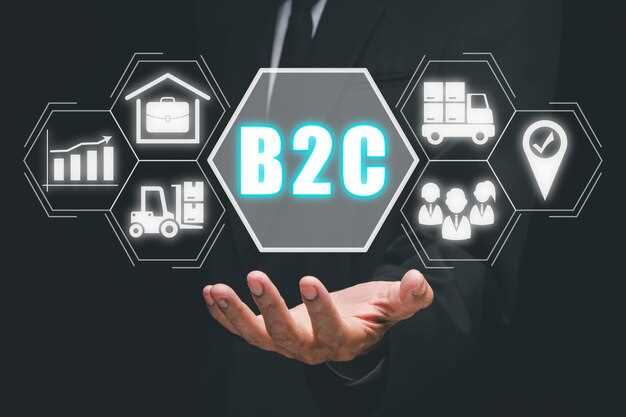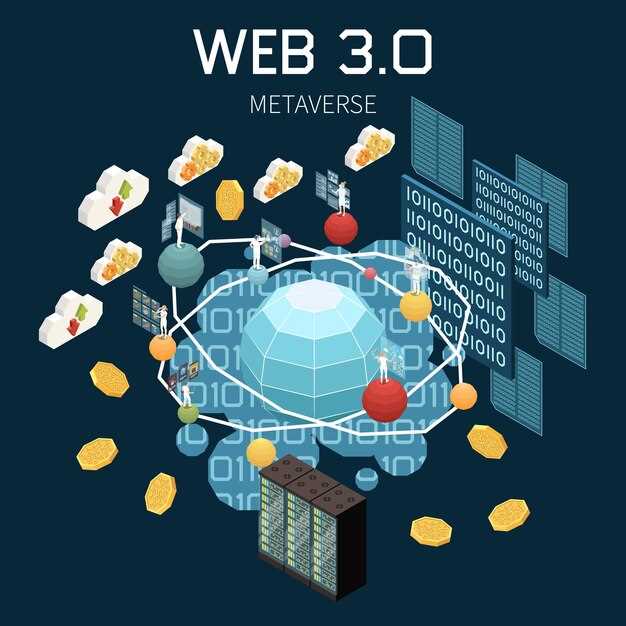Recommendation: Deploy a distributed ledger program now to boost speed and reduce costs through a unified view across a logistics network. A coalition of 94 participants has signed on, spanning six continents and linking manufacturers, distributors, and banking and logistics providers, with data flowing throughout a shared ledger that touches key points throughout the workflow.
The architecture uses a module approach, with a dedicated module covering shipping documentation, payments, and event reconciliation. This design reduces weight on legacy systems and enables changes without halting operations, while speed grows as data moves through the network and reconciliation points shrink.
Edwards, a veteran in trade finance analysis, notes that, currently, the strongest gains occur on the banking side and among providers coordinating between carriers and suppliers. Looking at the overall view, a single ledger delivers a consistent record across chains, reducing duplicate paperwork and speeding settlements.
To capture value, run a staged rollout across regions with the heaviest cross-border flow. Focus on three levers: utilization, costs, and speed, measured at delivery points as shipments pass through every side of the network. over time, align a cross-functional head to govern data standards and establish a sandbox that mirrors live conditions, with dashboards that compare current utilization against similar peers and track weight moved.
For stakeholders seeking practical gains, insist on interoperability across distributed ledgers within the same ecosystem, ensuring the provider network can scale without new custom interfaces. This approach yields a view of performance that is stable throughout, helping procurement, logistics, and treasury teams act in concert.
Practical impact of the IBM-Maersk network on global logistics
Standardize data schemas across partners; roll out in phases on the top 20 trade lanes, including locations: Singapore; Rotterdam; Los Angeles; Guangzhou; Dubai; Sydney, emphasizing data integrity. Establish a data-sharing agreement aligned with openshippingorg principles; this reduces friction in cross-border processes.
Participation from carriers, freight forwarders, customs brokers grows through a clear collaboration framework; this forms a part of a broader digital platform. Actually, this approach yields near real-time status, lowering risk.
Product modules deliver a unified line of data feeds; this project enables load optimization without duplicate entries. Business aims, traditionally siloed, require partners to actively participate to build end-to-end solutions. This helps minimize miss events.
Project milestones include digitizing customs messages; linking ERP data; enabling product-level traceability. A consistent approach reduces friction across locations, including hubs in Europe, Asia, North America.
Emphasizing measurable outcomes, the collaboration yields shorter cycle times; lower detention charges; higher participation.
Value proposition for shippers and suppliers: how cost, time, and accuracy improve
Recommendation: Launch a blockchain-enabled shared ledger pilot to cut cycle times by 20-30%, reduce manual checks by 40-60%, boost data accuracy.
Velocity of information rises; trading partners gain real-time visibility through integrated technologies; efficiency grows across the network, reducing things like regulatory paperwork misentries across lines.
- Cost efficiency: Real-time visibility cuts penalties; demurrage charges; claim costs; overall cost per shipment decreases 12-25% across lines.
- Time savings: Shared data speeds order-to-cash; transit times improve 15-40% by route; customs clearance times reduced 25-50% with digital contracts; automated form sharing eliminates re-entries.
- Accuracy gains: Digital contracts, verified data, standardized form templates raise document accuracy from 70-80% to 95% plus; inches of paperwork shrink to a few clicks.
- Risk reduction: Real-time alerts reduce miss shipments; damaged goods; claim latency; non-compliance incidents decline.
- Network growth: Growing network effects rely on shared data models; participation from shipping firms, suppliers, banks; people across roles gain confidence in data integrity.
Implementation plan
- Define a basic baseline; set KPIs; align on a shared data model, agreed standards.
- Choose pilot lanes; start with a few production lines; integrate with ERP; connect with banking partners including hsbc, kohler.
- Set a measurement program: track cycle times, cost per shipment, accuracy rate; monitor miss indicators; monitor damaged goods events over years.
- Scale program: extend coverage across additional lines; increase participation; migrate to broader network over time.
In a world of growing cross-border activity, the blockchain-enabled approach provides an answer to friction in transport, delivering quicker resolution, reduced costs, higher trust without relying on bespoke paperwork.
System integration: aligning ERP, WMS, and IoT with the blockchain fabric
Recommendation: Initiate a joint pilot that links ERP line item data, WMS tasks, IoT telemetry; deploy a middleware layer with a lightweight API gateway; expose a single source of truth across modules; adopt a standard event schema; maintain a contract on data quality via an agreement; prefer modern, cloud-native components; use internet protocols for access; target a constrained scope in Australia to validate this model before scaling.
Establish governance: a joint steering body; define data ownership; set access controls; implement encryption at rest; encrypt in transit; ensure API security using OAuth2; a white paper serves as the reference for the approach; sponsor an agreement among participants to maintain consistency across sites.
Data mapping specifics: align ERP line item data with WMS task updates via a common event model; attach IoT metrics to each inventory unit; ensure a traceable history for every item; log events with timestamps; rely on apis along with middleware to deliver real-time visibility; maintain a white source of truth for cross-system decisions; источник знаний: индустриальные форумы и white papers.
Technical blueprint: use lightweight adapters at ERP, WMS; IoT gateways to translate sensor payloads into common event formats; design with offline resilience; implement retries; use a white-labeled dashboard for access; ensure performance meets latency targets; maintain a back-end that scales from a single site to a multi-site network; adopt a joint digital fabric with standard data exchange; a single API contract per supplier; leverage a distributed ledger proxy for traceability.
Initiatives in Australia show progress: align customs notices, transport alerts, warehouse receipts; observers report access to real-time events; источник знаний remains a reference for this progress; the story illustrates faster reconciliations, lower error rates, stronger trust among suppliers.
Economic payoff: reduced overhead, improved inventory accuracy, resilience; the modern setup supports digital commerce; take advantage of apis, data quality, secure access; forecasts indicate payback within months for focused pilots.
Privacy and governance: data access, permissions, and audit trails

Recommendation: Implement role-based access controls (RBAC) with explicit permissions for each data domain; pair permissions with immutable audit trails; enforce least privilege; deploy a centralized policy engine; use token-based session control; adopt multi-factor authentication; configure automated alerts for anomalous access; use present-state monitoring to minimize exposure while preserving velocity in core processes.
Governance structure: Roles defined as owner, steward, auditor, operator; access granted by need-to-know; permissions expire on schedule; data residency rules apply in Hamburg; encryption at rest; keys rotated; automated reviews; edwards chairs the policy council; maersks program office coordinates a Hamburg pilot; the announcement communicates a baseline that is agreed by all; active monitoring ensures most requests are resolved within minutes; velocity of approvals improves; builder teams convert policy into automation; future iterations range from stricter retention to expanded redaction; going forward, privacy remains central to value creation.
Audit trails and monitoring: Tamper-evident logs timestamp every access; cryptographic hashes tie events to data sets; immutable ledger entries enable post-event reconciliation; cross-system checks reduce drift; retention policy spans 12 months with quarterly external audits; automated alerts flag unusual patterns; present risk indicators feed governance cadence; future incident simulations are scheduled; underlying telemetry informs policy tweaks; maersks continues to use this baseline to drive transparency; initiatives focus on achieving maximum assurance with minimal friction; most teams report clearer accountability; faster dispute resolution; measured by response time reductions.
Security and regulatory compliance: encryption, identity management, and cross-border rules
Implement end-to-end encryption with AES-256 for data at rest and TLS 1.3 for data in transit, paired with centralized key management via a compliant provider and hardware security modules (HSMs) to maximize data protection of shipment details.
Adopt federated identity management using a trusted provider; enforce MFA, RBAC, device attestation, and PKI-based certificates for all system components; maintain a basic identity lifecycle and audit trails.
Map cross-border data flows and align with customs controls; implement data transfer agreements, privacy safeguards, and localization where required; ensure documentation for each shipment and processing activity across the world.
Senior security leaders and developers must collaborate with carriers and regional teams to validate controls; leverage modern, dynamic governance tools accessible via the internet; release cycles should be working and updated annually; kohler-informed risk signals can be added to strengthen oversight.
| Área | Recommendation | Notas |
| Encryption and key management | Use AES-256 at rest, TLS 1.3 in transit; deploy HSMs or KMS; rotate keys annually; enforce least privilege | Separate development and production environments; maintain access logs |
| Identity and access | Federated identity, MFA, RBAC, device attestation, PKI certificates | Integrate with provider services; apply continuous access reviews |
| Cross-border data handling | Data flow mapping, transfer impact assessments, localization where needed; maintain processing records | Include customs checks; address Australia-specific requirements |
| Governance and auditing | Regular independent audits; prepared incident response; immutable logs; supplier controls | Ensure evidence is available to senior stakeholders |
Deployment roadmap: pilot, scale, and measurable milestones

Start a 12-week pilot across three locations with partners; scott leads cross-functional teams; establish neutral program governance; verify goods arrive on schedule, streamline picking, align finance, shipping, other processes; secure shared sign-offs on critical steps; monitor miss events, adoption trends, early performance indicators.
Scale plan targets: extend to five locations within eight weeks post pilot; three parallel tracks for logistics chains; dynamic routing across locations; adopt a shared data model across partners; align with tradelens, hsbc, edwards; assign program ownership; milestones: data availability 95 percent; shipping speed improvement 25–35 percent; utilization at key nodes above 70 percent; events captured within 24 hours; sign-offs on handoffs within 12 hours.
Governance structure remains neutral; appoint источник within the program; involve finance teams, logistics operations, partners; designate scott as liaison for the other sites; ensure data integrity, with a clear process to miss events and resolve promptly; capture lessons from each location to inform next phase.
Measurement phase: define three milestones: 1) data latency <4 hours; 2) sign-off cycle <6 hours; 3) miss rate ≤2 percent; track speed, utilization, event counts; run monthly drills; compare current performance against baseline; publish shared dashboards for partners; source data via tradelens, hsbc, edwards; include scott in the review loop.
Adoption plan: select three to five early adopters; provide targeted coaching; currently track uptake rates; identify friction points; involve partners, finance teams, shipping operators; maintain a neutral posture to prevent bias; scott ensures alignment across sites; run weekly live events review; adjust picking, sign-off, shared processes based on feedback; document lessons through source material labeled источник for audit.

 94 Companies Join IBM and Maersk’s Blockchain Supply Chain">
94 Companies Join IBM and Maersk’s Blockchain Supply Chain">
